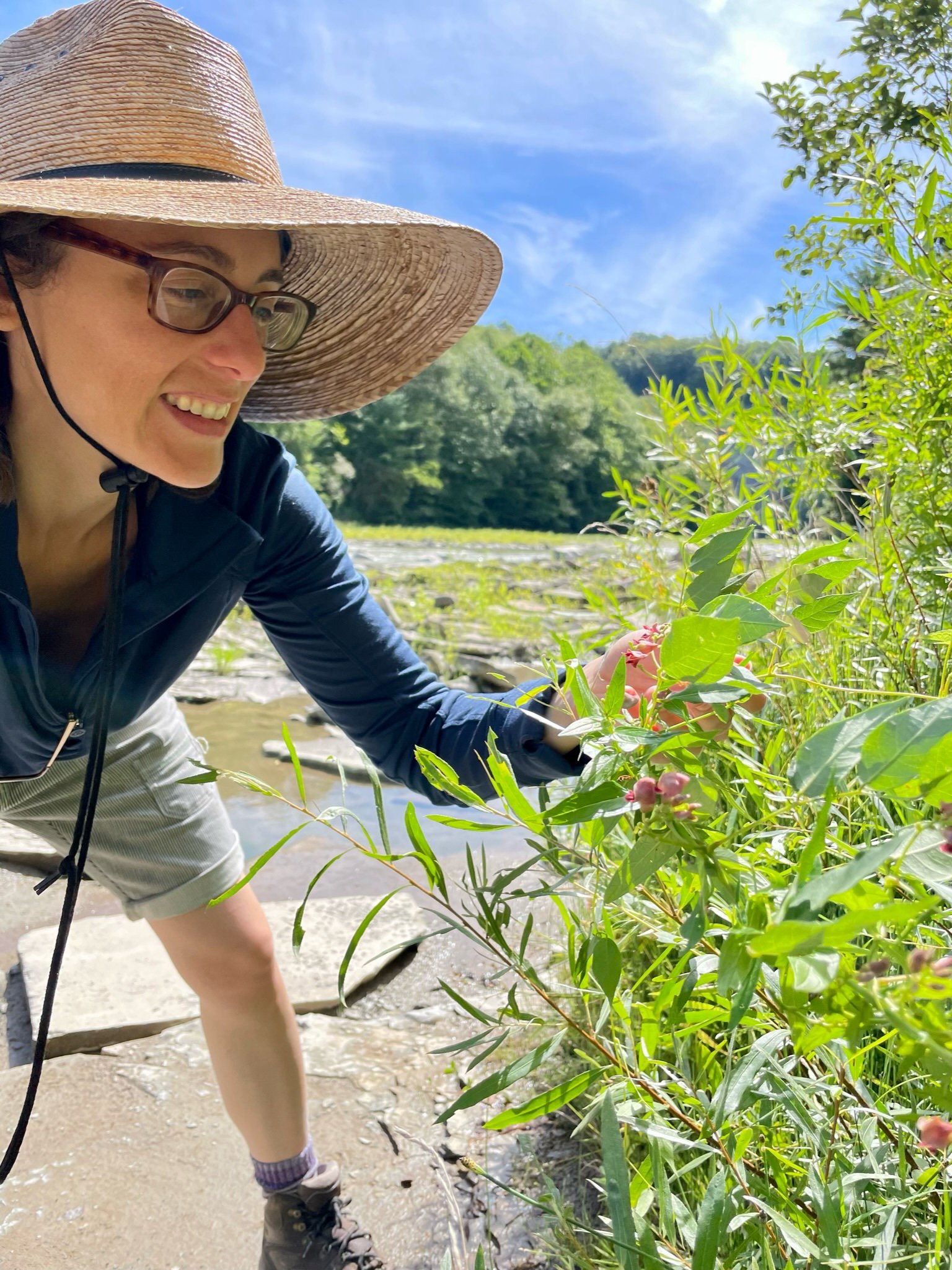Writing as a “Lay” Gardener
Image: I’m standing in a creek bed, grinning and examining a pink ground nut flower cluster (Apios americana). Photo by Janine Desmond.
I sometimes feel torn about writing articles for A Nourishing Harvest as a "lay" gardener. Wouldn't this project be more respectable if I had an advanced degree? Wouldn't it be great to come at it with expertise in soil science or environmental public health?
Since grad school hasn't been in the cards, I've leaned into the advantages of approaching contamination issues from where I sit. After years of working for organic veggie farms, nurseries, agriculture/garden-related non-profit projects, and herbal medicine education, I care deeply about my community's ability to harvest safe and healthy food and medicine, and I know which questions to ask. The topics I explore through A Nourishing Harvest draw from a range of disciplines; no one academic specialty would fully prepare me for this work.
Though I may not be an "expert" myself, I strive to reference reliable, reputable sources to ensure the quality of each article. In an age where folks are losing the ability to distinguish accurate, responsible sources from inaccurate ones, I want to be clear that every article I’ve written as a “non-expert” has relied on the work of experts. I’m not making up my own information—I’m spotlighting the work of others.
I believe everyone should have access to information that makes safe, low-contamination gardening and foraging possible. If an experienced gardener with a bachelor's degree can't find, understand, and accurately share info from academic journals and government resources--let alone someone without the privilege I've had to attend college--this points to problems with those sources, and with academia itself.
That said, I've got my eye on a Journalism certificate program to ensure that I'm sharing information as responsibly and effectively as possible.
Never miss an article: Join the Sweet Flag Herbs newsletter to receive an email when a new A Nourishing Harvest article is posted.
